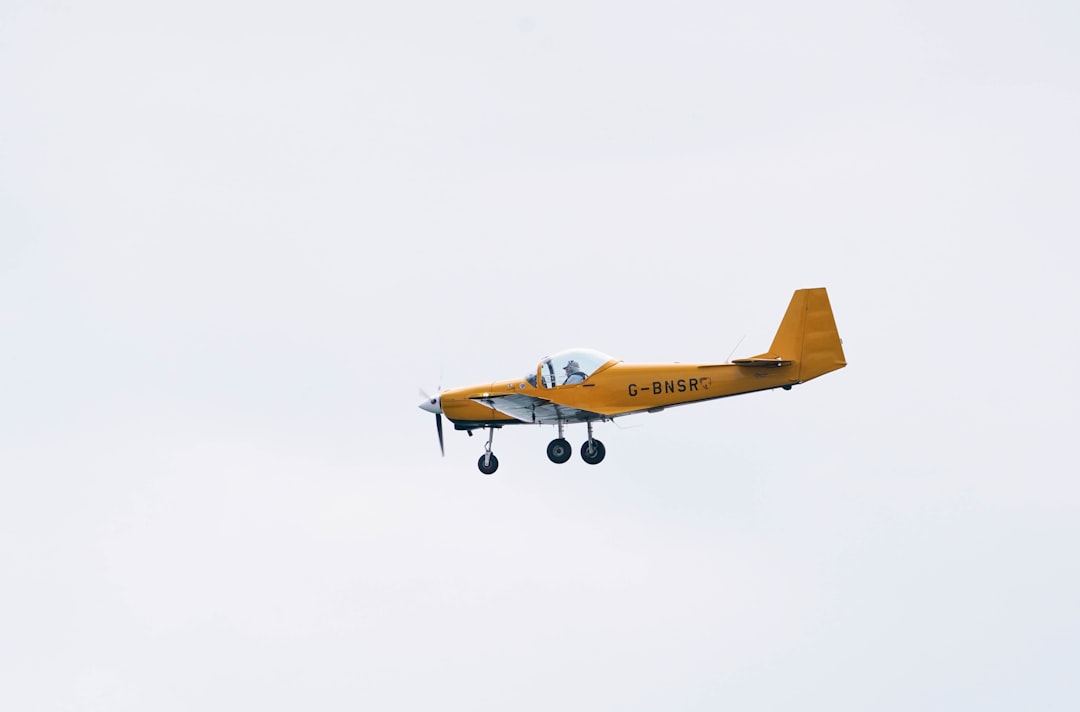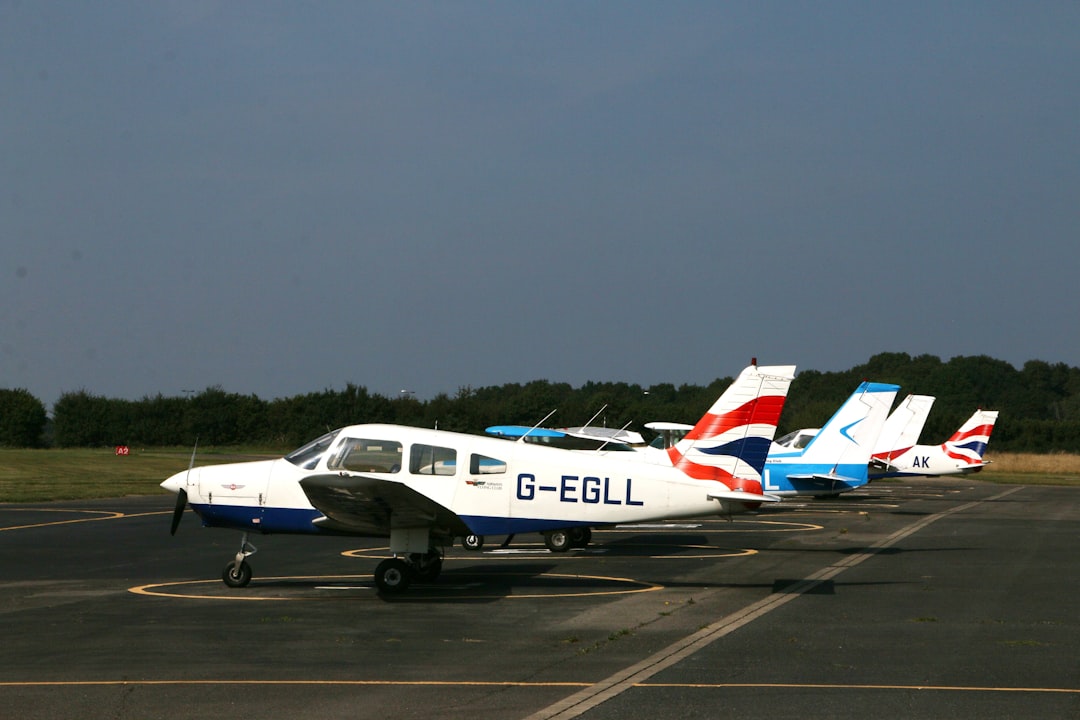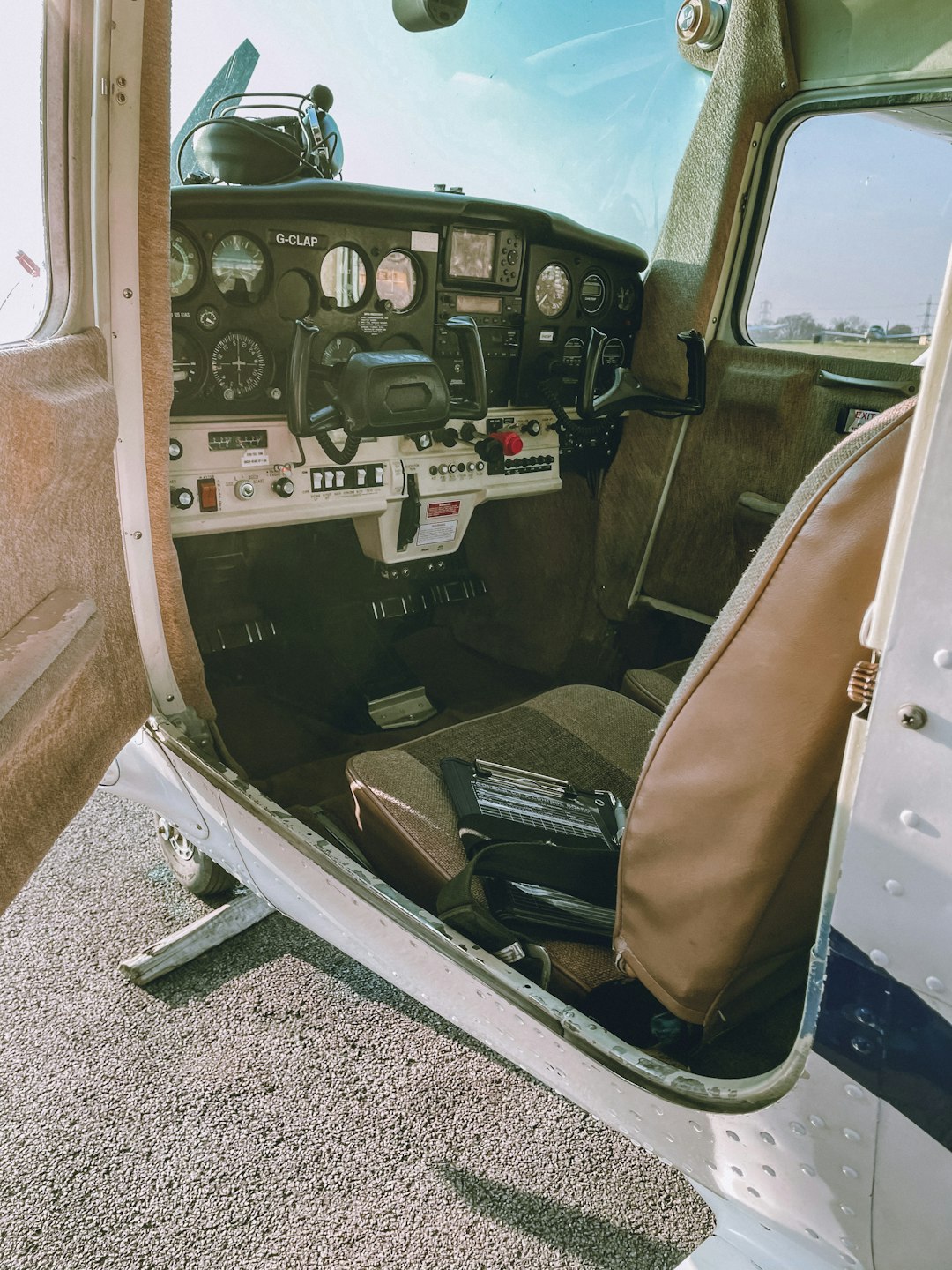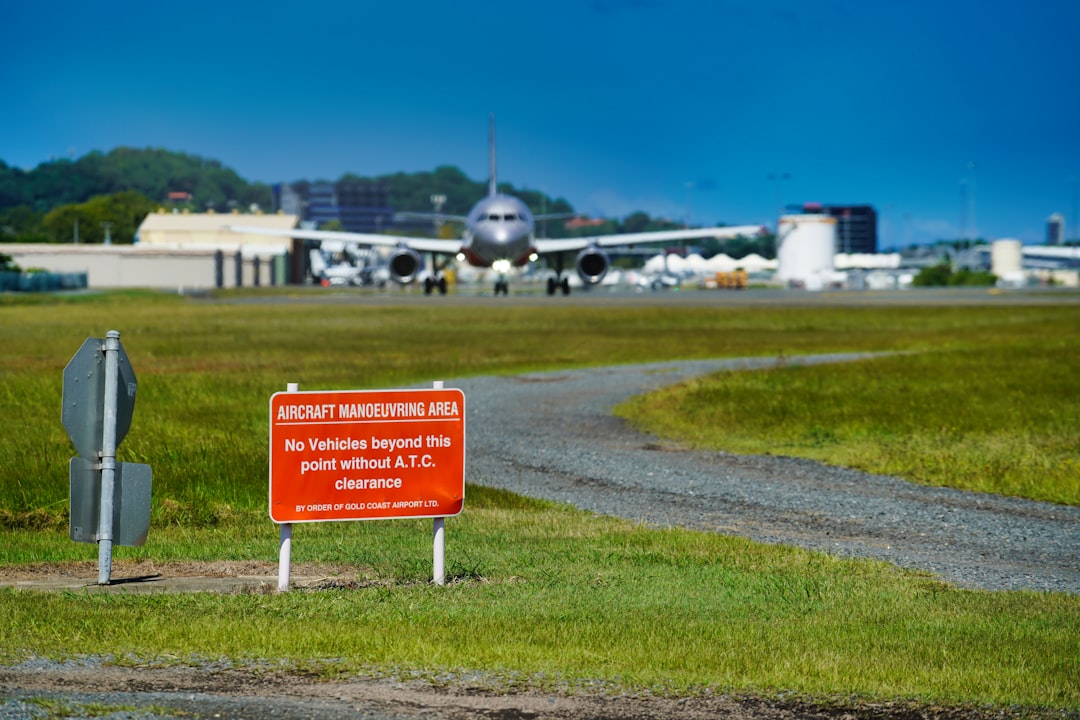MOSAIC Rules Are Here: How FBOs Can Cash In on the Training Revolution
Published on August 25, 2025 • 6 min read

Flight training customers have received significant regulatory relief. The FAA's new MOSAIC (Modernization of Special Airworthiness Certification) rule, finalized July 18, 2025 and published July 24, 2025, fundamentally rewrites sport pilot and Light-Sport Aircraft regulations. The result? The EAA confirms that sport pilots will be able to fly an estimated 70% of today's GA fleet—with AOPA projecting up to 75%—when the rule becomes effective October 22, 2025.
Important Reality Check: While MOSAIC opens doors to thousands of aircraft, actual qualification depends on specific aircraft configurations, maintenance records, and compliance with new performance criteria. Many aircraft will require modifications or detailed certification reviews before they can be operated under sport pilot privileges.
For FBOs, this represents significant market expansion potential, though success depends on careful implementation and realistic expectations about timeline and complexity.
The Numbers That Will Change Your Business Plan
MOSAIC provides these key changes:
- Sport pilot certificate requires 20 hours minimum (15 with instructor, 5 solo)—half the 40-hour private pilot minimum
- Cessna 172s, Cherokee 140s, and most 4-seat trainers can now be flown by sport pilots (expanded privileges, not LSA designation)
- No medical certificate required for sport pilots (driver's license medical)
- Modern LSAs typically cost $150,000-$300,000—significantly less than new certified trainers
EAA Chairman Jack Pelton calls it "one of the most significant rule packages for general aviation in the past 75 years." The flight training market is poised for significant expansion, creating opportunities for well-positioned FBOs.
 Training aircraft demand is set to surge as MOSAIC makes flying more accessible to new pilots
Training aircraft demand is set to surge as MOSAIC makes flying more accessible to new pilots
Implementation Reality: Challenges You Need to Know
Before diving into revenue projections, understand that MOSAIC implementation involves more complexity than regulatory headlines suggest:
Insurance Considerations That Matter
Rate Impacts: Aviation insurance rates have increased 5-10% annually in recent years, even for claim-free operators. MOSAIC aircraft may face additional scrutiny from underwriters unfamiliar with expanded LSA operations. Industry sources indicate LSA operations typically see 15-30% higher premiums initially, with rates normalizing after 12-18 months of claims-free operation.
Training Requirements: Insurance companies are demanding stricter initial training requirements for pilots transitioning to new aircraft types. Expect insurers to require CFIs with specific make and model experience for sport pilot training in newly-qualified aircraft.
Coverage Gaps: Traditional aircraft insurance policies may not automatically cover sport pilot operations. Review your coverage carefully and budget for potential premium increases or policy modifications.
Instructor Certification Bottlenecks
Flight instructors must hold commercial pilot certificates to teach sport pilots—a requirement that creates training capacity constraints. With CFI certificates expiring every 24 months per FAR 61.197 (the only pilot certificates with mandatory expiration), maintaining adequate instructor staff requires ongoing investment.
Reality Check: Many CFIs view instruction as a stepping stone to airline careers. High turnover means continuous recruitment and training costs that eat into MOSAIC revenue projections.
Immediate Revenue Opportunities When MOSAIC Takes Effect
MOSAIC becomes effective October 22, 2025. Here's what smart FBOs are doing right now to prepare. Understanding aviation industry trends helps position your FBO for growth.
1. Audit Your Training Fleet for Instant LSA Qualification
The rule shifts from weight-based to performance-based criteria. Aircraft with stall speeds up to 59 knots (sport pilots) and 61 knots (private pilots) now qualify. Run your fleet through the numbers:
Immediate LSA Candidates:
- Cessna 150/152 (most variants)
- Piper Cherokee 140
- Cessna 172 (many variants with 40° flaps)
- Beechcraft Skipper
- Grumman AA-1 series
Revenue Reality Check: Early adopters report increased interest in training programs, but sustainable revenue growth depends on market size, competition, and successful implementation. Start with conservative projections—plan for 15-25% training volume increases in year one, with potential for higher growth as the market matures.
2. Capture the Medical-Exempt Market Immediately
Sport pilots only need a driver's license medical. This opens the door to pilots who've been medically grounded or those avoiding the hassle and cost of FAA medicals.
Target Demographics:
- Older pilots who've lost medical certificates
- Recreational pilots deterred by medical requirements
- International students from countries with different medical standards
- Career-change pilots seeking efficient certification paths
Industry analysts expect a significant portion of new sport pilot students to be medically-exempt pilots returning to aviation.
3. Slash Training Costs and Market Strategically
The sport pilot certificate has always required a minimum of 20 hours (15 dual, 5 solo) versus 40 hours for private pilot certification. With training rates at $150-200/hour, that's $3,000-6,000 in savings per student. MOSAIC doesn't change these hour requirements but dramatically expands the aircraft sport pilots can fly.
Marketing Budget Reality: Plan to invest $2,000-5,000 monthly in digital marketing during the first 6 months. Track cost-per-lead metrics carefully—successful FBOs report $50-150 per qualified lead with targeted campaigns.
Proven Marketing Messages:
- "Get Your Pilot License in Half the Time"
- "No Medical Required—Start Flying with Just Your Driver's License"
- "From Zero to Pilot in 20 Hours"
 Modern LSAs feature glass panels and advanced avionics that appeal to tech-savvy students
Modern LSAs feature glass panels and advanced avionics that appeal to tech-savvy students
Long-Term Strategy: Building the Next-Generation Training Empire
The Fleet Modernization Opportunity
MOSAIC allows aircraft manufacturers to use consensus standards (ASTM) instead of full FAA certification. This means new LSA trainers at roughly half the cost of traditional certified aircraft.
Cost Comparison Reality:
- New Cessna 172 Skyhawk: ~$450,000-$500,000 (with modern avionics)
- Current well-equipped LSAs: $150,000-$300,000 (market average ~$175,000)
- High-end LSAs (Icon A5, etc.): $350,000+
- Entry-level LSAs (Glasair Merlin): ~$139,000 equipped
Important Note: These are base prices. Factor in options, delivery delays, and initial higher pricing for new MOSAIC-qualified aircraft as manufacturers adjust to new regulations.
Operational Savings That Add Up:
- Rotax-powered LSAs: ~5.5 gal/hour vs 8+ gal/hour for legacy trainers
- Premium auto gas vs 100LL avgas: 40-50% fuel cost reduction
- Lower maintenance reserves: $10/hour vs $115/hour for certified aircraft
Modern LSA aircraft like the Flight Design CTLS can provide 30% lower direct operating costs compared to traditional trainers like the Cessna 152. This calculation factors in:
- Fuel consumption: 5.5 vs 7.5 gal/hour (saves ~$10-15/hour)
- Maintenance reserves: $10 vs $25/hour (saves ~$15/hour)
- Insurance: $3,500 vs $4,800 annual hull coverage
- Total hourly cost reduction: $25-35/hour or approximately 30% savings
Market Expansion: The New Student Pipeline
MOSAIC creates multiple new customer pathways:
1. Sport-to-Private Pilot Progression Most sport pilot students will eventually upgrade to private pilot certificates. Capture them early with LSA training, then upsell to advanced training.
2. Recreational Pilot Renaissance Many pilots just want to fly for fun on weekends. Sport pilot certificates with LSA aircraft perfectly serve this market.
3. International Training Market Lower barriers to entry make US flight training more attractive to international students, especially from countries with restrictive medical requirements.
4. Career Pathway Programs Airlines facing pilot shortages are partnering with flight schools. MOSAIC's lower entry costs make these partnerships more economically viable.
Technology Integration for Competitive Advantage
Modern LSAs come standard with glass cockpits, touchscreen avionics, and autopilots. This creates training advantages:
- Student Appeal: Tech-savvy younger pilots prefer modern interfaces
- Training Efficiency: Glass panel familiarity translates to advanced aircraft
- Safety Features: Built-in traffic systems and terrain awareness reduce accident risk
- Instructor Benefits: Easier aircraft management allows focus on teaching
The Hangar Optimization Angle: Where AirPlx Enters
Here's where MOSAIC creates an unexpected challenge: more aircraft, same hangar space.
As FBOs expand training fleets with LSAs and capture more students, hangar capacity becomes the bottleneck. A typical FBO adding 3-4 new LSA trainers needs 30-40% more hangar space—space that doesn't exist.
The Smart Play: Instead of building new hangars (at $60-120/sq ft), optimize existing space. Modern hangar management systems can increase capacity by 25-40% through better aircraft placement algorithms.
Example Revenue Scenario: An FBO that fits two additional $150,000 LSAs in optimized space could potentially generate $180,000+ in additional annual revenue from training fees, rental income, and fuel sales. Important: This example assumes 65-75% utilization (industry average is 45-65% for training aircraft), billing at $125/hour wet rate, with 800-900 flight hours per aircraft annually. Your actual results will vary based on local market conditions.
 Efficient hangar management becomes critical as FBOs expand training fleets to meet MOSAIC demand
Efficient hangar management becomes critical as FBOs expand training fleets to meet MOSAIC demand
Competition Reality: Part 141 Schools Have Advantages
Before diving into MOSAIC implementation, understand your competitive landscape. Part 141 flight schools enjoy several advantages:
Part 141 Benefits:
- Reduced hour requirements (35 hours for private pilot vs 40 for Part 61)
- VA funding eligibility for eligible students
- International student visa (M-1) authorization
- Standardized curriculum attracts insurance discounts (typically 10-15% lower premiums)
- FAA examining authority reduces checkride delays
Your Part 61 Counter-Strategy:
- Flexibility in training schedule appeals to working professionals
- Lower overhead allows competitive pricing
- Personalized instruction vs standardized curriculum
- Faster sport pilot pathway (20 hours) levels the playing field
Maintenance Facility Requirements: The Hidden Investment
Expanding your LSA fleet means new maintenance considerations:
Rotax Service Requirements:
- Initial technician training: $3,000-5,000 per mechanic
- Specialized tools and equipment: $15,000-25,000
- Parts inventory investment: $10,000-20,000
- Annual recurrent training: $1,500-2,500 per technician
Facility Modifications:
- Oil disposal system for automotive-grade oils
- Additional parts storage for Rotax-specific components
- Updated maintenance tracking software ($200-500/month)
- Consider becoming an authorized service center (increases customer confidence)
Reality Check: Many FBOs underestimate maintenance infrastructure costs by 30-40%. Budget accordingly or partner with existing Rotax service centers initially.
The Bottom Line: First-Mover Advantage Expires Fast
MOSAIC represents the biggest regulatory opportunity for FBOs since deregulation. The flight training market is about to get significantly more accessible and profitable. But first-mover advantage in your local market won't last long.
Forward-thinking FBOs are already capturing market share with sport pilot programs, modern LSA fleets, and aggressive marketing. The question isn't whether MOSAIC will change your business—it's whether you'll lead the change or react to it.
Key Success Factors:
- Speed: Implement changes within 90 days of rule effectiveness
- Fleet Strategy: Balance immediate LSA recertification with long-term modern aircraft acquisition
- Market Focus: Target medical-exempt pilots and cost-conscious recreational flyers
- Space Optimization: Maximize hangar capacity to accommodate fleet expansion
The flight training revolution starts now. Make sure you're flying it, not watching it.
Ready to Optimize Your Expanding Training Operation?
MOSAIC will drive more aircraft into your hangars. AirPlx's AutoStack technology helps you fit them efficiently, maximizing revenue from every square foot. Our 3D optimization algorithms handle the complex puzzle of training aircraft with different dimensions, turning radii, and utilization patterns.
Calculate Your Hangar ROI | See Training Fleet Optimization
Sources:
- FAA MOSAIC Final Rule
- General Aviation News - MOSAIC Final Rule Released
- EAA MOSAIC Announcement
- EAA: MOSAIC Fleet Expansion Analysis
- AOPA MOSAIC FAQ - Fleet Accessibility
- Aviation Consumer: LSA Cost Analysis
- FLT Academy - How MOSAIC Will Transform Flight Training
- Bureau of Transportation Statistics - General Aviation Fleet Data


